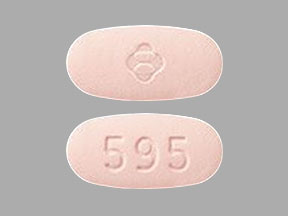Letermovir Side Effects
Medically reviewed by Drugs.com. Last updated on Oct 12, 2023.
Applies to letermovir: oral tablet. Other dosage forms:
Serious side effects of Letermovir
Along with its needed effects, letermovir may cause some unwanted effects. Although not all of these side effects may occur, if they do occur they may need medical attention.
Check with your doctor immediately if any of the following side effects occur while taking letermovir:
More common
- Bloating or swelling of the face, arms, hands, lower legs, or feet
- rapid weight gain
- tingling of the hands or feet
- unusual weight gain or loss
Less common
- Black, tarry stools
- chest pain
- chills
- cough
- dizziness
- fainting
- fast, pounding, or irregular heartbeat or pulse
- fever
- lower back or side pain
- painful or difficult urination
- pale skin
- sore throat
- trouble breathing
- ulcers, sores, or white spots in the mouth
- unusual bleeding or bruising
- unusual tiredness or weakness
Other side effects of Letermovir
Some side effects of letermovir may occur that usually do not need medical attention. These side effects may go away during treatment as your body adjusts to the medicine. Also, your health care professional may be able to tell you about ways to prevent or reduce some of these side effects.
Check with your health care professional if any of the following side effects continue or are bothersome or if you have any questions about them:
More common
For Healthcare Professionals
Applies to letermovir: intravenous solution, oral tablet.
General
Adverse reactions included those reported during treatment with study medication or within 2 weeks of study medication completion/discontinuation. The most common adverse reactions reported in hematopoietic stem cell transplant (HSCT) patients included nausea, diarrhea, vomiting, peripheral edema, cough, headache, fatigue, and abdominal pain; the most common adverse reaction reported in kidney transplant patients was diarrhea.[Ref]
Cardiovascular
Common (1% to 10%): Tachycardia, atrial fibrillation
The cardiac side effect rate was higher in HSCT patients using this drug (13%) compared to those using placebo (6%). Tachycardia (4% [compared to 2% with placebo]) and atrial fibrillation (3% [compared to 1% with placebo]) were the most commonly reported cardiac side effects. Most cardiac side effects were reported as mild or moderate in severity.
Gastrointestinal
Very common (10% or more): Nausea (up to 32%), diarrhea (up to 26%), vomiting (up to 19%), abdominal pain (up to 12%)
Hematologic
Very common (10% or more): Decreased hemoglobin (up to 41%), decreased platelets (up to 27%), decreased absolute neutrophil count (up to 19%)
Common (1% to 10%): Decreased leukocytes
Frequency not reported: Neutropenia, leukopenia
In HSCT patients, decreased hemoglobin (less than 6.5 g/dL: 2%; 6.5 to less than 8 g/dL: 14%; 8 to less than 9.5 g/dL: 41%), platelets (less than 25,000 cells/mcL: 27%; 25,000 to less than 50,000 cells/mcL: 17%; 50,000 to less than 100,000 cells/mcL: 20%), and absolute neutrophil count (less than 500 cells/mcL: 19%; 500 to less than 750 cells/mcL: 4%; 750 to less than 1000 cells/mcL: 8%) were reported during therapy or within 2 weeks of stopping therapy.
In kidney transplant patients decreased hemoglobin (less than 6.5 g/dL: 2%; 6.5 to less than 8 g/dL: 4%; 8 to less than 9.5 g/dL: 29%; total less than 9.5 g/dL: 34%), leukocytes (less than 1000 cells/mcL: 1%; 1000 to less than 2000 cells/mcL: 5%; 2000 to less than 2500 cells/mcL: 4%; total less than 2500 cells/mcL: 10%), absolute neutrophil count (less than 500 cells/mcL: 2%; 500 to less than 750 cells/mcL: 1%; 750 to less than 1000 cells/mcL: 1%; total less than 1000 cells/mcL: 5%), and platelets (50,000 to less than 100,000 cells/mcL: 1%; total less than 100,000 cells/mcL: 1%) were reported during therapy or within 2 weeks of stopping therapy.
Hepatic
Uncommon (0.1% to 1%): Increased ALT, increased AST
Hypersensitivity
Uncommon (0.1% to 1%): Hypersensitivity reaction
After switching from the oral formulation, hypersensitivity reaction (associated with moderate dyspnea) was reported in 1 HSCT patient after the first IV infusion; as a result, treatment was discontinued.
Metabolic
Uncommon (0.1% to 1%): Decreased appetite
Musculoskeletal
Uncommon (0.1% to 1%): Muscle spasms
Nervous system
Very common (10% or more): Headache (up to 14%)
Uncommon (0.1% to 1%): Dysgeusia, vertigo
Other
Very common (10% or more): Peripheral edema (up to 14%), fatigue (up to 13%)
Renal
Very common (10% or more): Increased serum creatinine (up to 73%)
In 1 study, increased serum creatinine greater than 2.5 mg/dL and greater than 1.5 to 2.5 mg/dL was reported in 2% and 17% of HSCT patients, respectively, during therapy or within 2 weeks of stopping therapy. In another study, increased serum creatinine greater than 1.5 mg/dL was reported in 15% of HSCT patients during therapy or within 2 weeks of stopping therapy.
Increased serum creatinine greater than 2.5 mg/dL, greater than 1.5 to 2.5 mg/dL, and total greater than 1.5 mg/dL was reported in 24%, 49%, and 73% of kidney transplant patients, respectively, during therapy or within 2 weeks of stopping therapy.
Respiratory
Very common (10% or more): Cough (up to 14%)
Frequency not reported: Dyspnea
More about letermovir
- Check interactions
- Compare alternatives
- Reviews (1)
- Dosage information
- During pregnancy
- Drug class: miscellaneous antivirals
- Breastfeeding
- En español
Patient resources
- Letermovir oral/injection drug information
- Letermovir (Intravenous) (Advanced Reading)
- Letermovir (Oral) (Advanced Reading)
Other brands
Professional resources
Other brands
Related treatment guides
References
1. (2023) "Product Information. Prevymis (letermovir)." Merck Sharp & Dohme LLC, SUPPL-11
2. (2020) "Product Information. Prevymis (letermovir)." Merck Sharp & Dohme (Australia) Pty Ltd
3. (2023) "Product Information. Prevymis (letermovir)." Merck Sharp & Dohme (UK) Ltd
Further information
Always consult your healthcare provider to ensure the information displayed on this page applies to your personal circumstances.
Some side effects may not be reported. You may report them to the FDA.

